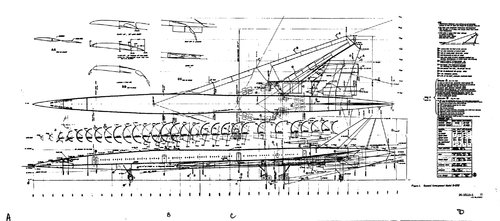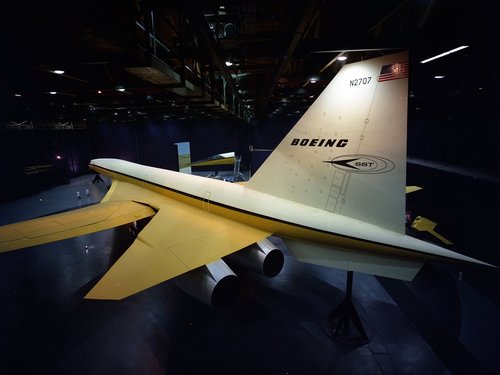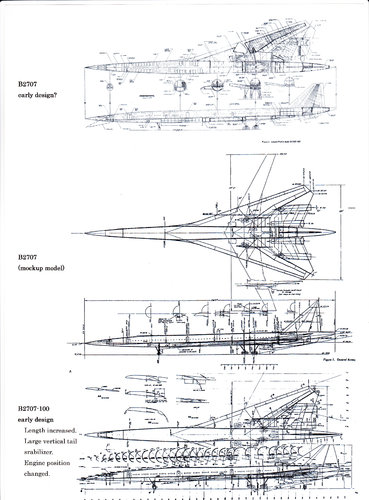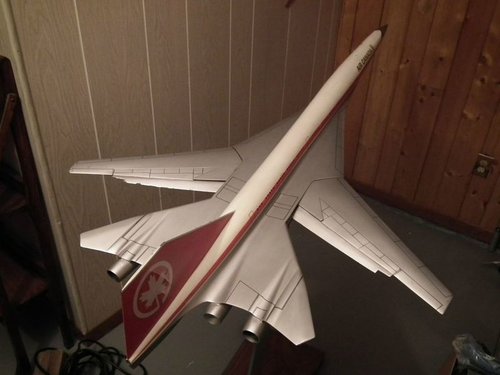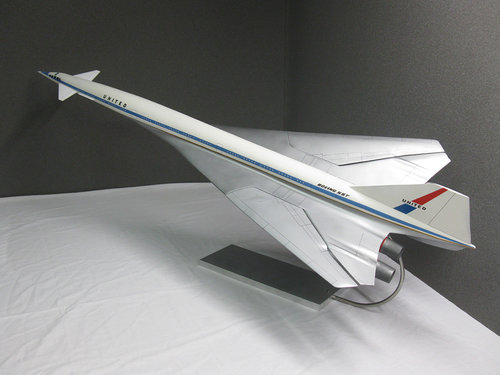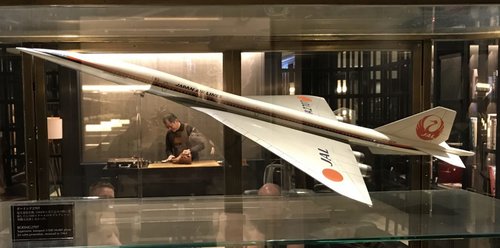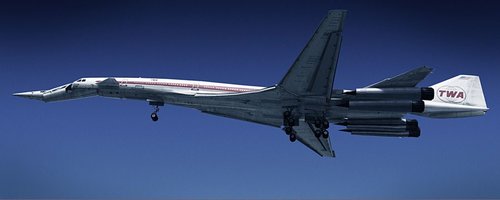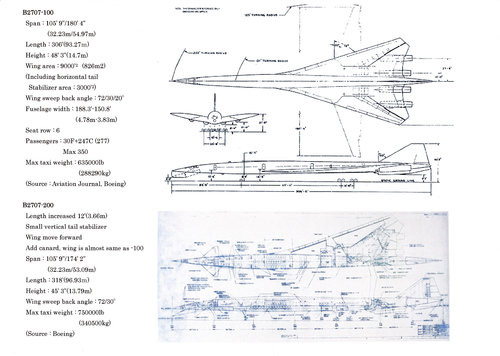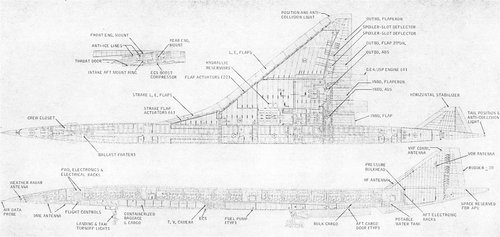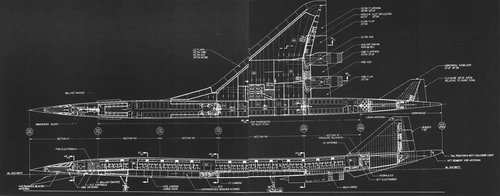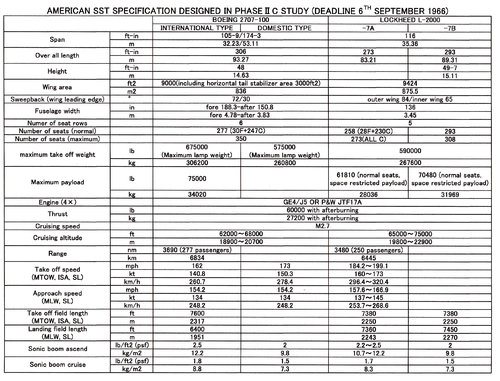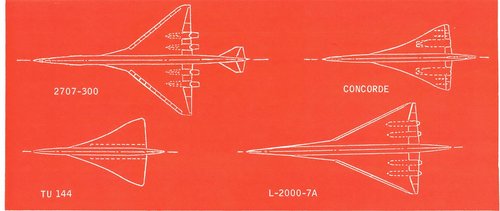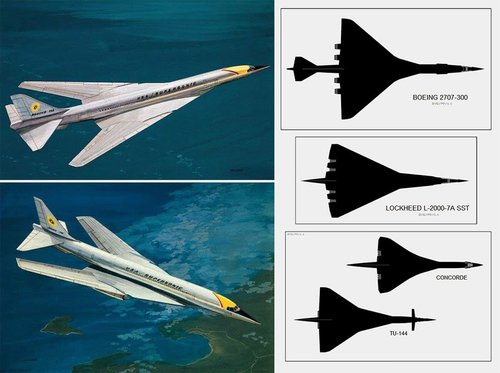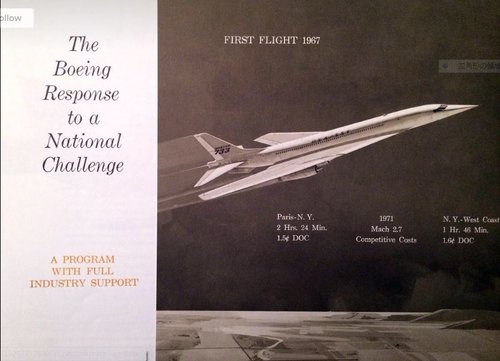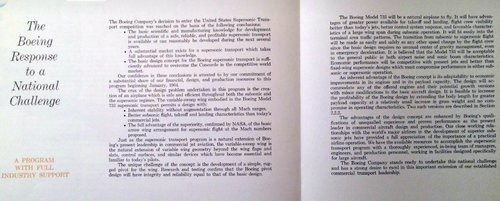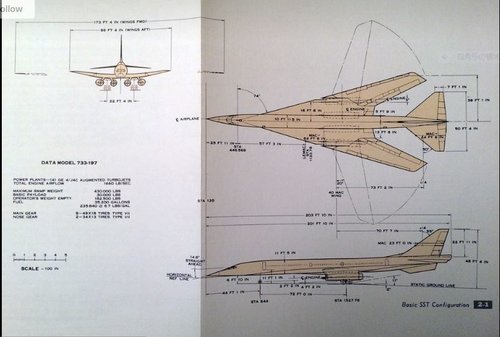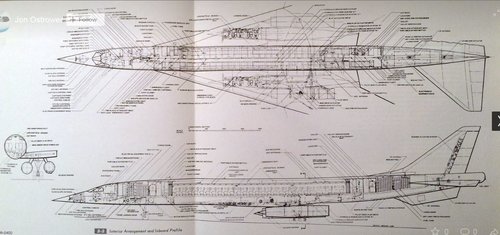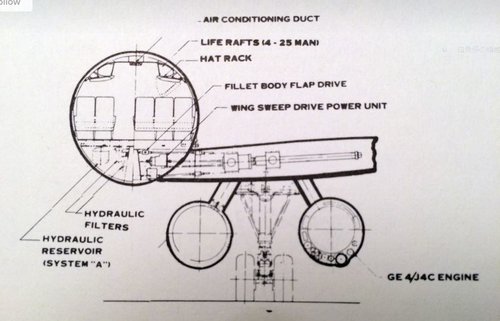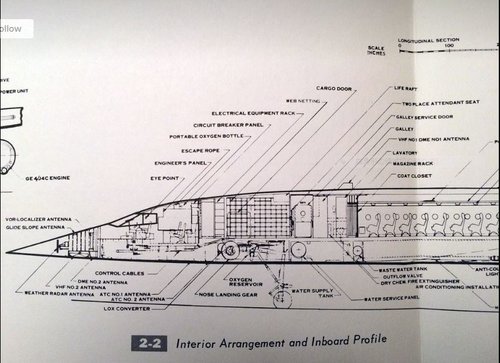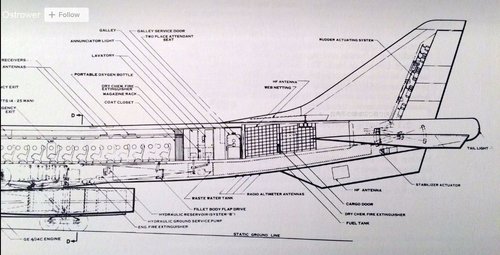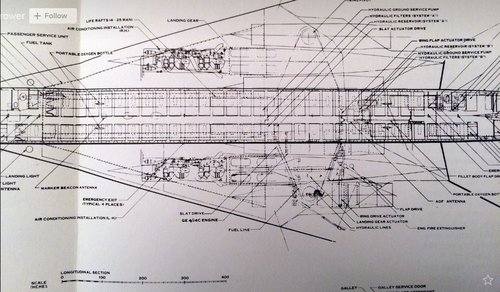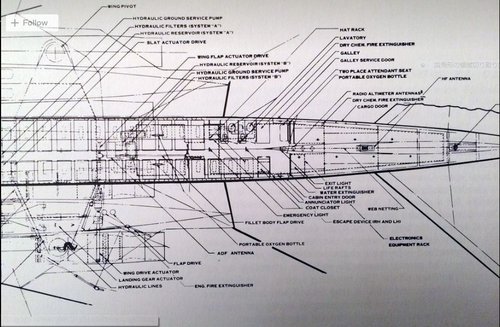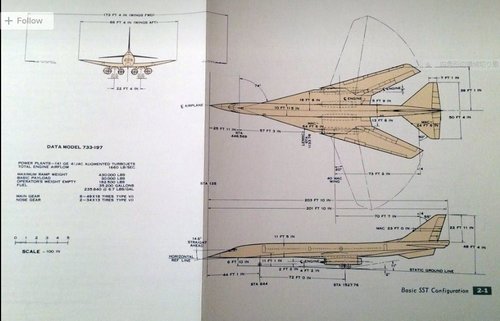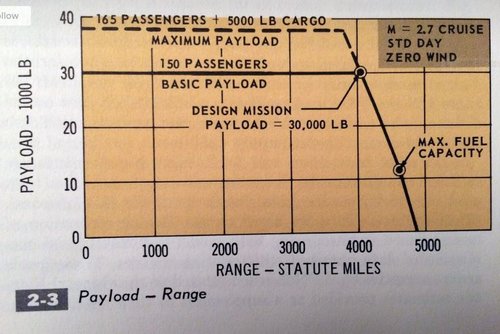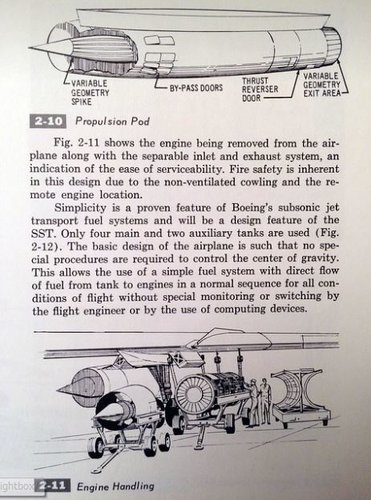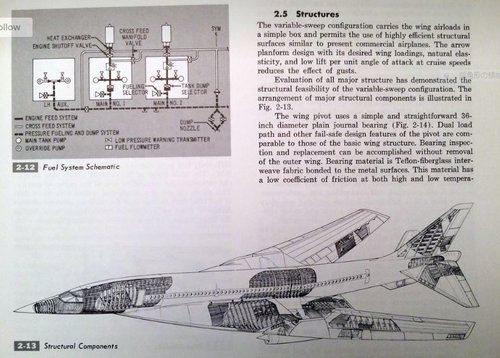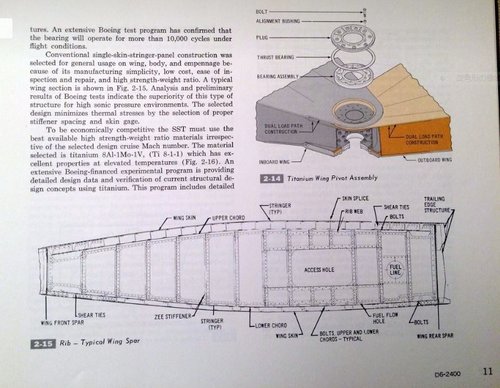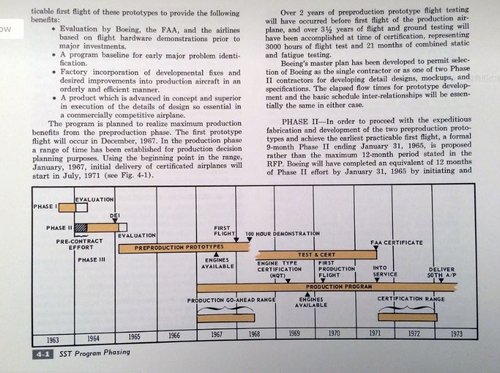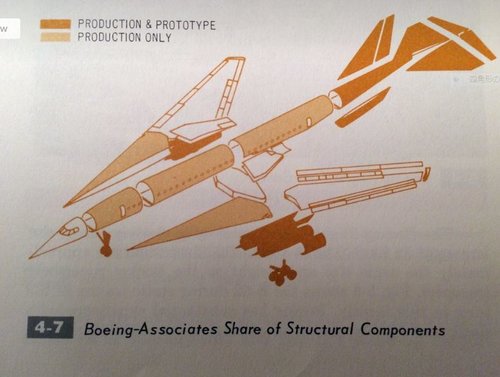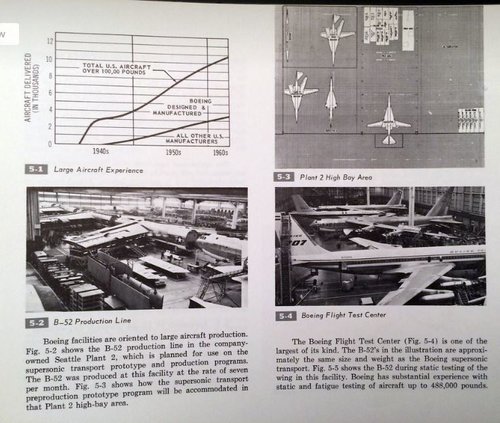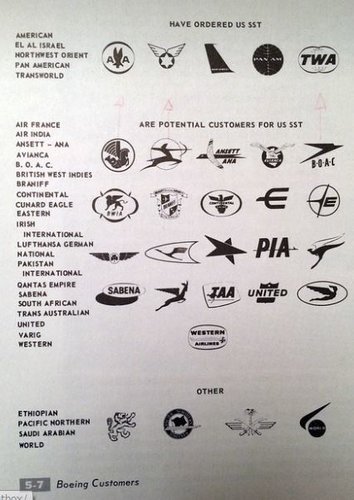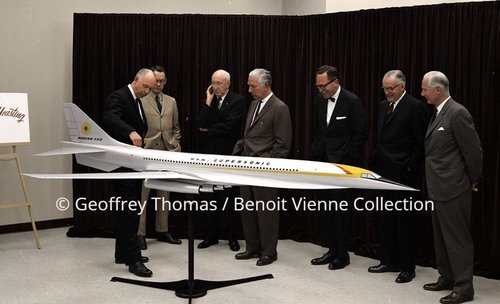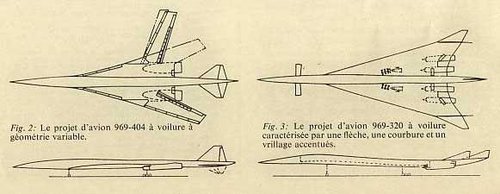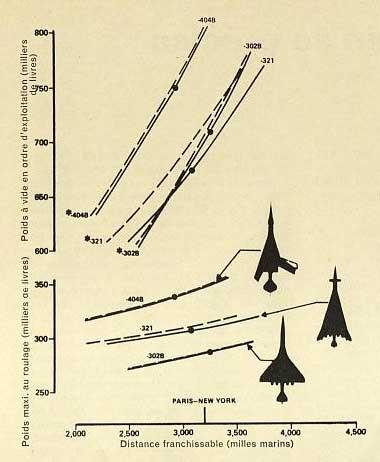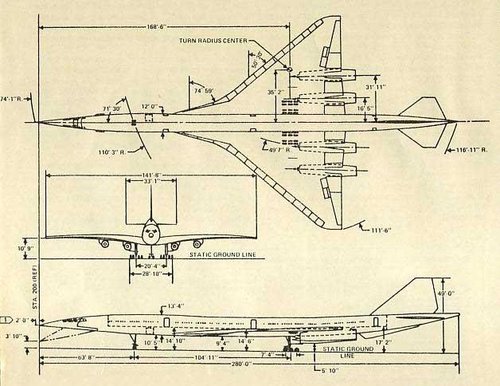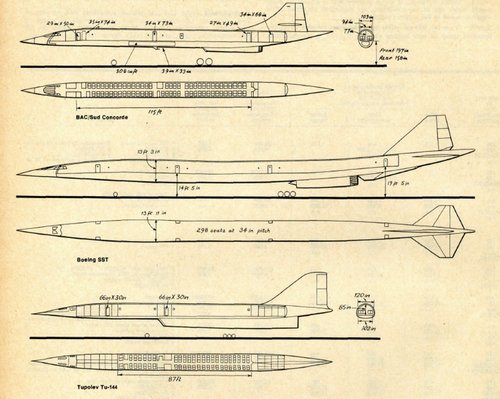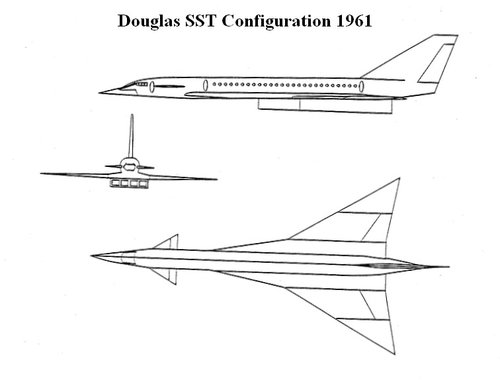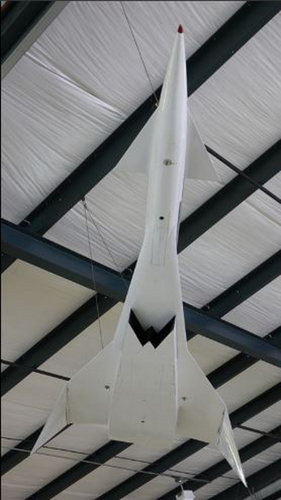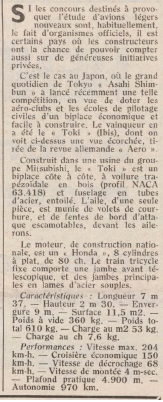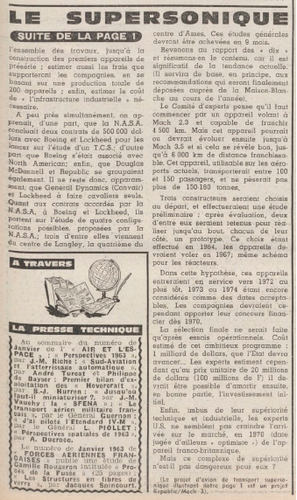All that Right.
There was a Boeing 2707 (sans suffixe),that is maybe originaly the 733-467,and that is the last two drawings you posted. The one with the tall fin, no canards, and one pieces droop nose. But even between these two drawings , one can see differences, see the under tail fin. Details changes from drawing to drawing as the design development goes.
The first Boeing Mock-up is that one Boeing-2707 (sans suffixe), with the tall tail.

But then again different in details, like it had the two pieces droop nose of the 2707-100, and position of the under tail fin is again different. And even the model presented with the mock-up was different , having the later 2707-100 fin design


So I suppose they started working on the mock-up, planned to make it like the Boeing 2707 (sans suffixe), then design progressed to the 2707-100 with two piece nose before the presentation, and they incorporated that to the mock-up
65A10191 is the drawing designation, like the 2707-200 one you posted above is 65A10479. Don't know what "65A" stands for, but the higher the next number, the later the design development obviously. But someone more knowledgeable than me here could maybe tell us.
There was a Boeing 2707 (sans suffixe),that is maybe originaly the 733-467,and that is the last two drawings you posted. The one with the tall fin, no canards, and one pieces droop nose. But even between these two drawings , one can see differences, see the under tail fin. Details changes from drawing to drawing as the design development goes.
The first Boeing Mock-up is that one Boeing-2707 (sans suffixe), with the tall tail.
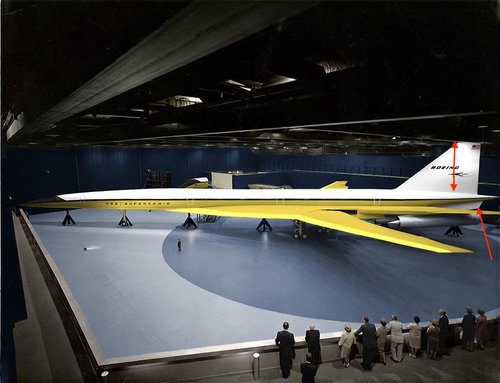
But then again different in details, like it had the two pieces droop nose of the 2707-100, and position of the under tail fin is again different. And even the model presented with the mock-up was different , having the later 2707-100 fin design

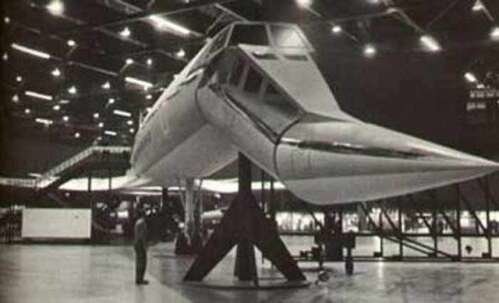
So I suppose they started working on the mock-up, planned to make it like the Boeing 2707 (sans suffixe), then design progressed to the 2707-100 with two piece nose before the presentation, and they incorporated that to the mock-up
65A10191 is the drawing designation, like the 2707-200 one you posted above is 65A10479. Don't know what "65A" stands for, but the higher the next number, the later the design development obviously. But someone more knowledgeable than me here could maybe tell us.
Last edited:

